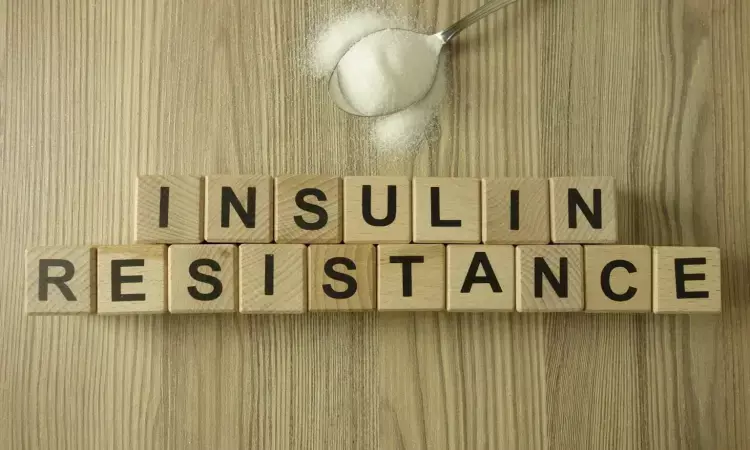- Home
- Medical news & Guidelines
- Anesthesiology
- Cardiology and CTVS
- Critical Care
- Dentistry
- Dermatology
- Diabetes and Endocrinology
- ENT
- Gastroenterology
- Medicine
- Nephrology
- Neurology
- Obstretics-Gynaecology
- Oncology
- Ophthalmology
- Orthopaedics
- Pediatrics-Neonatology
- Psychiatry
- Pulmonology
- Radiology
- Surgery
- Urology
- Laboratory Medicine
- Diet
- Nursing
- Paramedical
- Physiotherapy
- Health news
- Fact Check
- Bone Health Fact Check
- Brain Health Fact Check
- Cancer Related Fact Check
- Child Care Fact Check
- Dental and oral health fact check
- Diabetes and metabolic health fact check
- Diet and Nutrition Fact Check
- Eye and ENT Care Fact Check
- Fitness fact check
- Gut health fact check
- Heart health fact check
- Kidney health fact check
- Medical education fact check
- Men's health fact check
- Respiratory fact check
- Skin and hair care fact check
- Vaccine and Immunization fact check
- Women's health fact check
- AYUSH
- State News
- Andaman and Nicobar Islands
- Andhra Pradesh
- Arunachal Pradesh
- Assam
- Bihar
- Chandigarh
- Chattisgarh
- Dadra and Nagar Haveli
- Daman and Diu
- Delhi
- Goa
- Gujarat
- Haryana
- Himachal Pradesh
- Jammu & Kashmir
- Jharkhand
- Karnataka
- Kerala
- Ladakh
- Lakshadweep
- Madhya Pradesh
- Maharashtra
- Manipur
- Meghalaya
- Mizoram
- Nagaland
- Odisha
- Puducherry
- Punjab
- Rajasthan
- Sikkim
- Tamil Nadu
- Telangana
- Tripura
- Uttar Pradesh
- Uttrakhand
- West Bengal
- Medical Education
- Industry
Study Links Higher Serum Iron Levels to Lower Insulin Resistance

China: A recent nationwide study has revealed a compelling link between iron status and insulin resistance (IR) among adults in the United States. The research, which examined a large and diverse sample of the adult population, highlights a strong correlation suggesting that variations in iron levels may significantly influence insulin resistance—a key factor in the development of type 2 diabetes.
The study, published in The Journal of Clinical Endocrinology & Metabolism, revealed that higher serum iron (SI) levels might actually protect against insulin resistance.
Among a cohort of 2,900 adults, researchers discovered that elevated serum iron levels were associated with reduced insulin resistance. In contrast, higher iron intake and increased serum transferrin receptor (sTfR) levels were correlated with greater IR. Transferrin saturation was identified as the most reliable predictor of IR, surpassing other iron-related indicators in its predictive accuracy.
Evidence connecting markers of iron status to insulin resistance remains sparse. To fill this knowledge gap, Haiqing Zhang, Shandong University, Jinan, Shandong, China, and colleagues aimed to investigate the relationship between iron status and IR among U.S. adults.
For this purpose, the researchers analyzed data from 2,993 participants of the National Health and Nutrition Examination Survey (NHANES) spanning the periods 2003-2006 and 2017-2020. A HOMA-IR value of ≥2.5 defines insulin resistance.
The team employed weighted linear and multivariable logistic regression analyses to explore the linear relationships between iron status and IR. They utilized restricted cubic splines (RCS) to uncover potential non-linear dose-response associations. Additionally, stratified analyses were conducted based on age, sex, body mass index (BMI), and physical activity (PA). Finally, receiver operating characteristic (ROC) curve analysis assessed the predictive value of iron status for IR.
The following were the key findings of the study:
- In weighted linear analyses, serum iron exhibited a negative correlation with HOMA-IR (β = -0.03).
- In weighted multivariate logistic analyses, iron intake and serum transferrin receptor (sTfR) were positively correlated with IR (OR =1.02; OR =1.07).
- Also, SI and transferrin saturation (TSAT) were negatively correlated with IR (OR =0.96; OR =0.98) after adjusting for confounding factors.
- RCS depicted a nonlinear dose-response relationship between sTfR and TSAT and IR. This correlation remained consistent across various population subgroups.
- ROC curve showed that TSAT performed better than iron intake, SI, sTfR, and TSAT in ROC analyses for IR prediction.
"All biomarkers showed a significantly reduced risk of insulin resistance as iron levels increased. These findings enhance our understanding of the relationship between iron status and IR, offering a robust foundation for further investigation into the mechanisms driving this connection," the researchers concluded.
Reference:
Liu, X., Zhang, Y., Chai, Y., Li, Y., Yuan, J., Zhang, L., & Zhang, H. Iron status correlates strongly to Insulin Resistance among U.S. Adults: A nationwide population-base study. The Journal of Clinical Endocrinology & Metabolism. https://doi.org/10.1210/clinem/dgae558
Dr Kamal Kant Kohli-MBBS, DTCD- a chest specialist with more than 30 years of practice and a flair for writing clinical articles, Dr Kamal Kant Kohli joined Medical Dialogues as a Chief Editor of Medical News. Besides writing articles, as an editor, he proofreads and verifies all the medical content published on Medical Dialogues including those coming from journals, studies,medical conferences,guidelines etc. Email: drkohli@medicaldialogues.in. Contact no. 011-43720751


